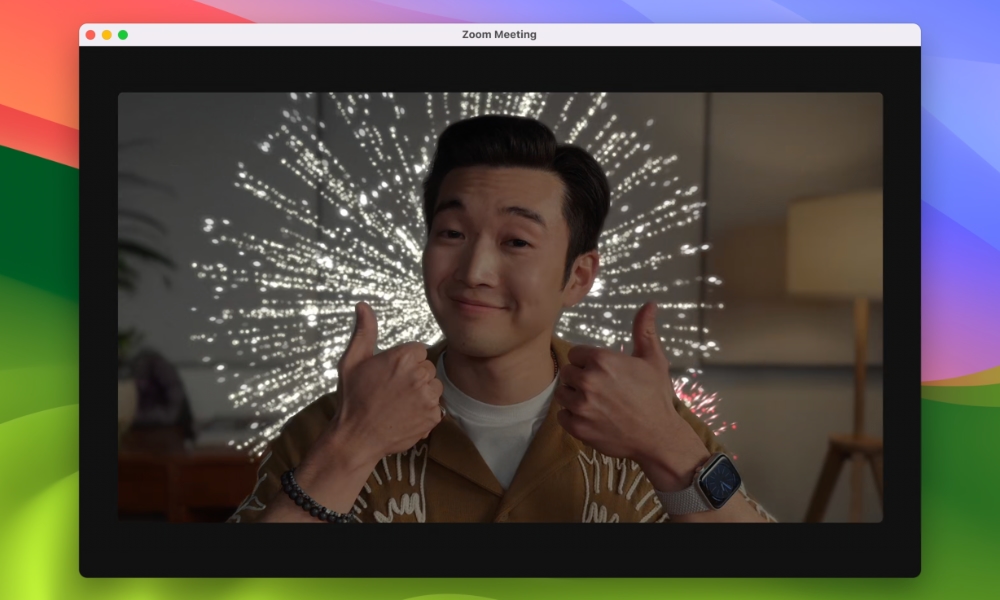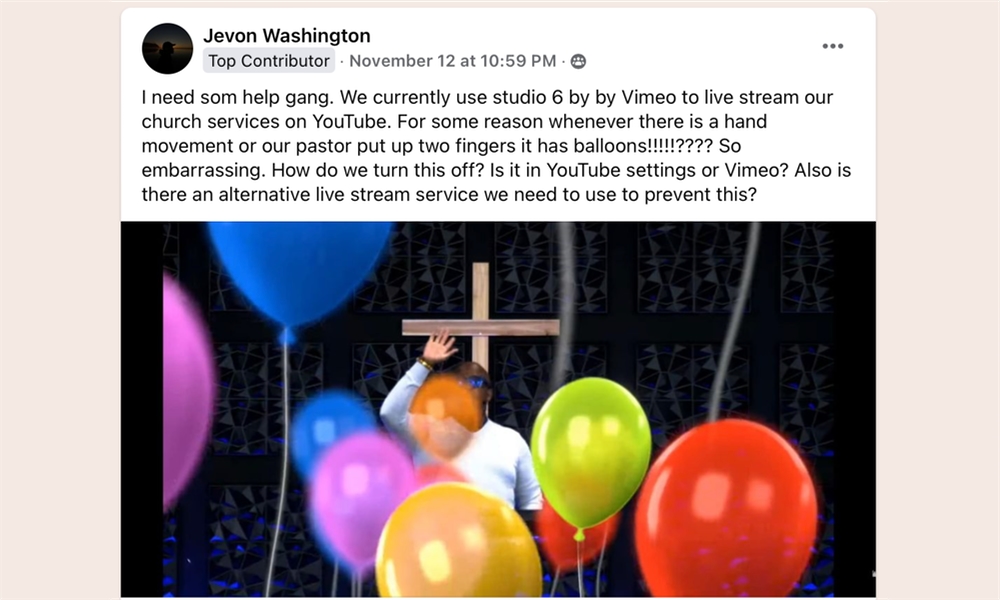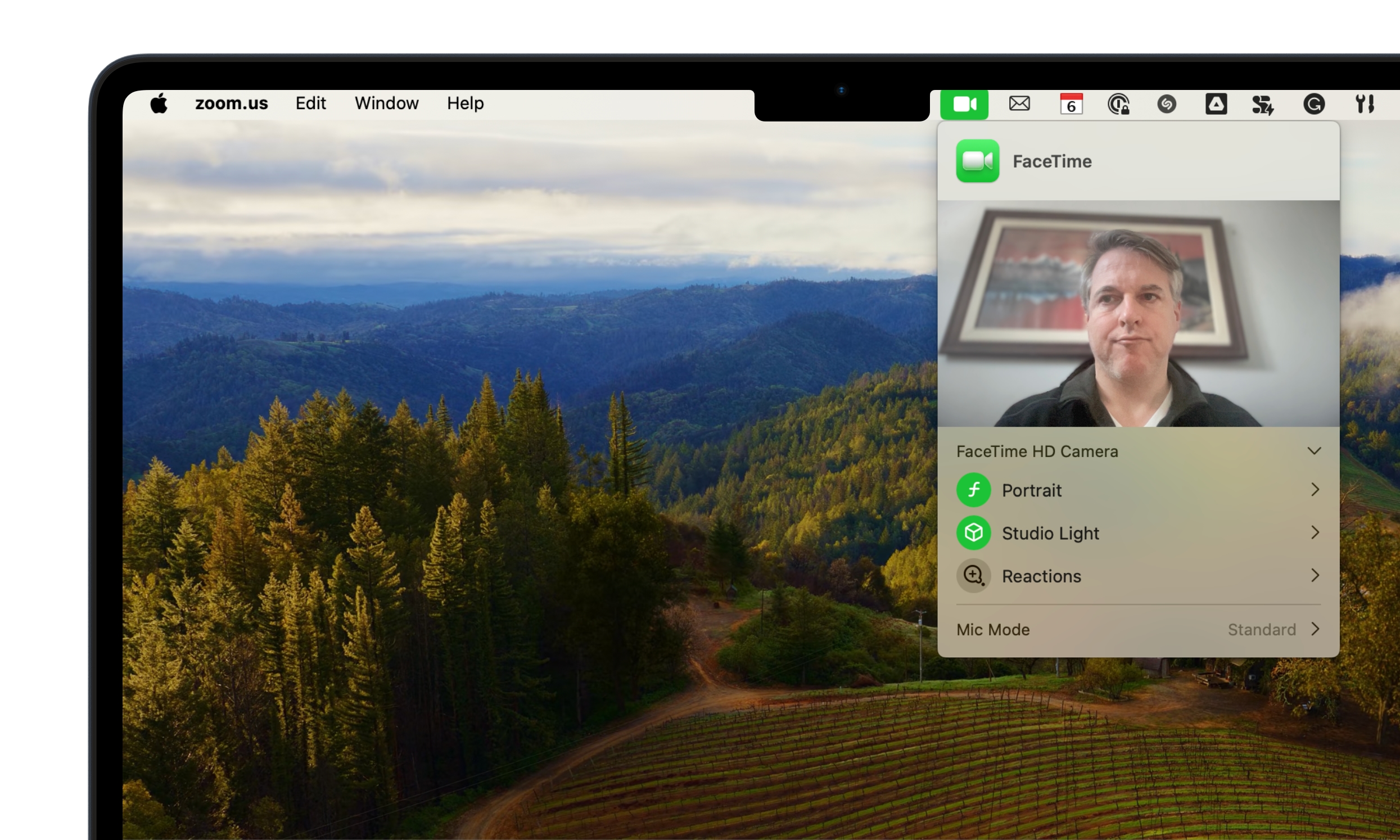iOS 17.4 Will Stop Fireworks from Showing up in Serious Video Calls

Toggle Dark Mode
There’s little doubt that Apple is good at offering some pretty fun and whimsical software features in its products, but sometimes these features can be just a bit too much.
Such is the case with Apple’s new video gesture reactions. Introduced in last year’s slate of software updates — iOS 17, iPadOS 17, macOS Sonoma, and tvOS 17 — the new feature lets you trigger 3D animated reactions in your FaceTime calls, but many were surprised to learn that it extends beyond Apple’s own video calling platform.
Although only FaceTime provides the buttons to trigger the reactions manually, Apple added the ability to trigger these eight reactions with hand gestures, using the TrueDepth camera to recognize when you put your thumbs up or down, make a heart shape, and more.
This meant that any video conferencing app on your iPhone, iPad, or Mac could show these gestures. In fact, the feature goes beyond video calling apps, leaving some folks caught off guard when trying to livestream events from a Mac. For example, we saw a post last fall of a person on a church media team wondering why balloons appeared whenever the pastor put up two fingers during a sermon.
If that’s not bad enough, users of online health services also found themselves running into these gestures, sometimes with even more awkward results. Having balloons or confetti suddenly appear while you’re trying to express your saddest thoughts during an online therapy session can be a bit unsettling, to say the least.
The good news is that these reactions can be easily disabled — if you know where to look. The problem is that they’re on by default, and Apple doesn’t make it obvious where you should look.
It’s been a serious enough problem that several apps that provide these types of services have resorted to updating their FAQs and even putting up warning dialogs to advise participants of the feature and how it might impact their sessions.
Services such as SimplePractice have also had to make it clear to their clients that this is an Apple feature they can’t do anything about — other than explaining to the user how to turn it off.
Important: This isn’t a feature integrated into our Telehealth platform and we don’t have control over these settings for iOS.
SimplePractice TeleHealth FAQ
Thankfully, that’s set to change in iOS 17.4 when it’s released next week. When the second iOS 17.4 beta was released earlier this month, we heard reports that individual apps would be able to turn off gesture-based reactions on video calls, and now MacRumors has confirmed that this is indeed coming in the final release.
Since it’s a developer feature, it’s not mentioned in the iOS 17.4 release notes, but rather the developer notes for iOS 17.4 RC:
Developers can control the default behavior of Reactions with the key NSCameraReactionEffectGesturesEnabledDefault. This is controlled per application and user choice will override application declared defaults (113811074)
Apple
In practical terms, iOS 17.4 will still leave gestures enabled by default across all apps, and users will still be able to toggle them on and off separately for each app — meaning you can use gestures in your personal FaceTime calls but keep them out of your professional Zoom calls.
However, developers will now be able to use a new configuration key in their apps to override this default, meaning gestures and reactions will be disabled in that app unless the user explicitly chooses to turn them on. Once you’ve turned them on for a specific app, they’ll stay on regardless of what the developer sets in the app.
So, if you really want to use gestures during an online therapy session or business meeting, you’ll be free to do so, but you won’t be surprised by balloons, confetti, or rain clouds coming up at inappropriate moments.
The catch is that developers must add this new configuration setting to turn gestures off. Those that don’t will continue working the way they did before. Services like SimplePractice will likely take advantage of this new capability for their apps. However, developers of more generic video conferencing apps may not bother, so you’ll still have to keep your eyes open and check your settings to ensure gestures are off where you’d prefer to avoid them.








